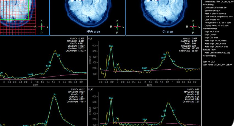New version of nickel release testing method EN 1811:2023 
On February 22, 2023, the European Commission for Standardization (CEN) released a new version of the reference test method for nickel release, EN 1811:2023, replacing the EN 1811:2011+A1:2015 version.
The new version of the standard is planned to be converted into a domestic standard for CEN member countries by the end of August 2023 (i.e. equivalent adoption of this European standard and publication as a national standard, or recognition at the national level). This standard is expected to be approved by the European Commission and will be listed as the coordinated standard for nickel release testing in Appendix XVII, item 27 of the EU REACH regulation after being published in the official EU gazette.
This test method is applicable to testing the nickel release of items that puncture the ears and other parts of the body, as well as items intended for direct and long-term contact with the skin (except for eyeglass frames and sunglasses).
The main changes in EN 1811:2023 are as follows:
Change the unit of nickel release to "µ g · cm-2 · week-1" (micrograms per square centimeter per week) (equivalent to the unit used in REACH regulations "µ g/cm2/week");
Allow the use of ready-to-use solutions of sodium hydroxide solution and hydrochloric acid solution (clauses 5.5 and 5.6);
Added precautions regarding the use of masking wax or paint: when using wax, immerse the sample in molten wax; When using paint, it may be necessary to use 2 to 3 layers of paint (clause 5.9);
Added instructions for rinsing samples with test solution (Section 8.2);
Allow the use of filtration to make the release liquid clear: injection filters can be used to avoid damaging the analytical instrument or blocking the capillary of the instrument (Article 8.2);
When multiple samples of the same item are tested, the nickel release of each sample must comply with the migration limit (Article 9.2.2.1);
For items with a migration limit of 0.5 µ g · cm-2 · week-1, the limit for determining the conformity of nickel release results is revised from<0.88 µ g · cm-2 · week-1 to ≤ 0.88 µ g · cm-2 · week-1 (Article 9.2.2.2);
Updated the testing report requirements, according to the requirements of the testing applicant, the testing report can include the sample testing area and the volume of the testing solution used (Article 10);
Removed the requirement for quality control materials (reference specimens);
When the presence of nickel in the outer coating is uncertain, two testing methods should be used (i.e. EN 1811 combined with wear and corrosion simulation method EN 12472, and not combined with EN 12472) (Appendix B.3);
The preparation status of the samples was summarized in table form and examples were added. Each individual subcomponent must meet the limit requirements for nickel release in direct and long-term contact with the skin. Uniform sub components can be obtained through disassembly, cutting, or masking (Appendix B);
Added a sample preparation and testing program flowchart for the complete watch (Appendix B.4.2.6).